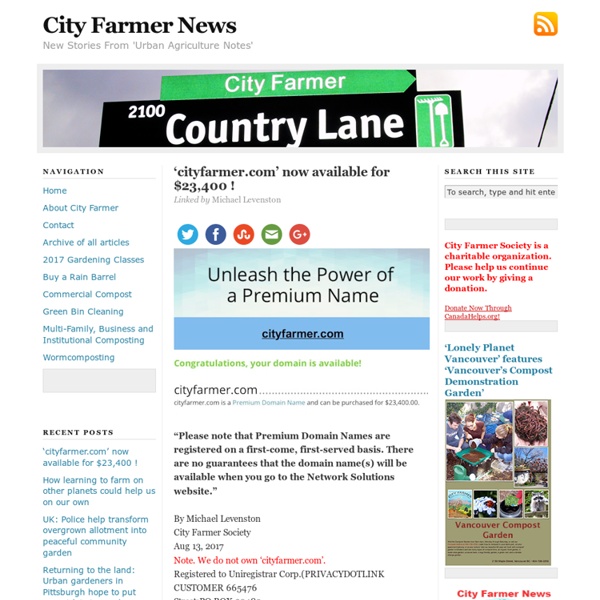



97th ESA Annual Meeting (August 5 Monday, August 6, 2012: 4:40 PM B113, Oregon Convention Center Jason M. Aloisio , Louis Calder Center - Biological Station and Department of Biological Sciences, Fordham University, Armonk James D. Lewis , Louis Calder Center - Biological Station and Department of Biological Sciences, Fordham University, Armonk, NY Do Something Different - Iceweasel Do something different... get something different. Be more effective. More in control. Portal:Agriculture and Agronomy - Wikipedia, the free encyclopedia - Iceweasel Agriculture in Ethiopia is the foundation of the country's economy, accounting for half of gross domestic product (GDP), 83.9% of exports, and 80% of total employment. Ethiopia's agriculture is plagued by periodic drought, soil degradation caused by overgrazing, deforestation, high population density, high levels of taxation and poor infrastructure (making it difficult and expensive to get goods to market). Yet agriculture is the country's most promising resource. A potential exists for self-sufficiency in grains and for export development in livestock, grains, vegetables, and fruits. As many as 4.6 million people need food assistance annually.
Problems with urban agriculture This page is under construction! One of the questions I like to ask people when talking about gardening in cities is, “What problems or issues do you see with farming and gardening in cities?” When I first started studying this subject I felt like there were no repercussions, nothing bad about urban agriculture, no reason not to garden in cities, but over time I remembered that nothing is perfect. While I believe that urban agriculture has many benefits and could make cities better places to live, below I’m going to talk about potential problems with urban agriculture. Polluted or contaminated soilsToxic chemicalsUse of waterTheft of produce and breaking laws to plant on some vacant lots
I was told to lie: Manus Island staffer Liz Thompson, a former migration agent turned whistleblower, has described the administration of the Manus Island detention centre as 'ridiculous' and claims she was instructed to tell detainees their only option was resettlement in Papua New Guinea. “They (detainees) watch the news, they read the newspapers, they watch what’s going around in the camp, they know there’s no decision from the Papua New Guinean Government on resettlement," she told Dateline's Mark Davis. "So what that means is… you’re never getting out of this camp, it’s indefinite detention." A spokeswoman for the Minister for Immigration and Border Protection, Scott Morrison, denied that Manus Island detainees had been told they would not be resettled in PNG.
Cities, Scaling and Sustainability Organizers: Luis Bettencourt, Geoffrey West Cities, Scaling, and Sustainability SFI's Cities, Scaling, and Sustainability research effort is creating an interdisciplinary approach and quantitative synthesis of organizational and dynamical aspects of human social organizations, with an emphasis on cities. Different disciplinary perspectives are being integrated in terms of the search for similar dependences of urban indicators on population size - scaling analysis - and other variables that characterize the system as a whole. A particularly important focus of this research area is to develop theoretical insights about cities that can inform quantitative analyses of their long-term sustainability in terms of the interplay between innovation, resource appropriation, and consumption and the make up of their social and economic activity.
SFI takes first steps toward a science of slums Feb. 6, 2013 8 p.m. Slums in the world’s fast-growing cities are often seen as problems and, in most cases, outside the law. But, from Paris and Tokyo 150 years ago to Mumbai and Johannesburg today, slums consistently emerge as a byproduct of the socioeconomic pressures of rapid urbanization, and they often don’t get the credit they deserve as entry points to the city for poor migrants, or for the economic activity they generate. With as many as a billion people now living in slums, understanding what might place these communities and their cities on paths of increasing socioeconomic opportunity is a priority.
Maps That Help You Understand The World 1. This map shows the world divided into 7 sections (each with a distinct color) with each section containing 1 billion people. 2. This map shows (in white) where 98 percent of Australia’s population lives. 3. It may not come as a surprise but more people live inside the circle than outside of it. Urban Agriculture: A Guide to Container Gardens A Guide to Container Gardens With inexpensive containers and suitable soil mix,you can create an urban garden virtually anywhere - on roof tops,vacant city lots, borwn fields, and unused portion of parking lots Job S. Ebenezer, Ph.D.President, Technology for the Poor, 877 PELHAM COURT, WESTERVILLE, OHIO - 43081technologyforthepoor@yahoo.com
What does Creative Commons means? (Infographic) - Iceweasel [german version] Many People know that there is something called "creative commons licenses". But what does it mean? Is it a license? No, CreativeCommons is a non-profit organization. 5 Brain Disorders That Started as Evolutionary Advantages #2. Dyslexia Is a Symptom of an Ancient Brain Superpower agsandrew/iStock/Getty Images Dyslexia is one of those strangely specific disorders that make you wonder just who the hell designed the human brain, anyway.